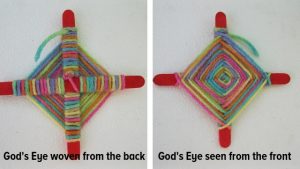 I was very lucky as a teacher to have worked with excellent assistants. It is very important that you as the head of your environment discover all the talents and abilities that your assistant has to offer. I only asked my assistant to do tasks I knew they could handle, and I assumed responsibility for everything else. The children reap the benefits of the harmonious working relationship.
I was very lucky as a teacher to have worked with excellent assistants. It is very important that you as the head of your environment discover all the talents and abilities that your assistant has to offer. I only asked my assistant to do tasks I knew they could handle, and I assumed responsibility for everything else. The children reap the benefits of the harmonious working relationship.
When I ran The Children’s Studio, my assistant was a close friend and neighbor who went through Montessori training with me, so she was more like a second teacher. She knew how to prepare the environment, and what to teach the children after I gave the main presentations.
When I taught in the Pilot Project for the Cincinnati Public Schools, I had no assistant. The kinder garteners and their teacher stayed with me in the modified Children’s Studio environment for 90 minutes. She joined me in teaching the children but I never gave her a lot of instructions; she was quick to learn by observation.
My assistant during the first year of the alternative Montessori school graduated from Xavier University and then found other employment. After that year I was assigned an assistant who had no educational background, so I needed to train her. I required her to be present at all lessons that I gave and to spend part of her day observing. To help the children to see and understand how the class was structured, I started making a Schedule of the Day on a blackboard(See: The Environment). I found that it benefited my assistant as well. I asked her to help me prepare materials for the environment. I let her do the things she liked to do, and I did the rest.After two years she left the school to take a job working for the City of Cincinnati.
The Art Education Department at the University of Cincinnati started sending students to observe in my classrooms. Students were also assigned to do their student teaching with me. Every year one of the students would ask me if I would allow them to work as my assistant
for one year. They were very competent and creative people. One year I wanted to teach children how to weave “god’s eyes”. I followed the directions in the book and gave individual lessons but found that it was difficult for the children to learn. I asked my assistant to use practice sticks and find an easier way to weave the yarn around the sticks. She discovered it was easier to weave the yarn if you did it from the back. It was easier to learn because it was a more sensorial approach. It was also easy for children to discover a simple variation.
The last person worked with me for twenty five years. When she was assigned to me, I was told that she was recovering from a major operation and would join me when she was able. After almost a month of working the environment alone, I realized again how valuable it is to have an assistant.
When she arrived, she watched all my lessons and I showed her how to help me maintain the environment. I found there were students that sought her help because she seemed to know how to motivate them. She also looked after me in many ways and always made sure I ended the class on time.She was working in the environment when I arrived in the morning and left with the children at the end of the day. She was willing to work as hard as I did, and we were successful as a team because we liked and respected each other.
